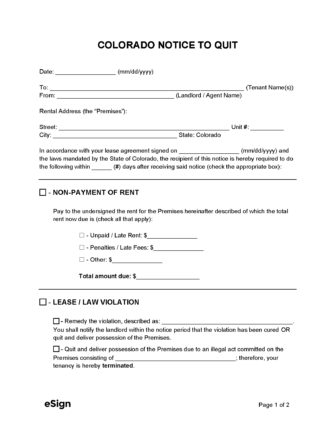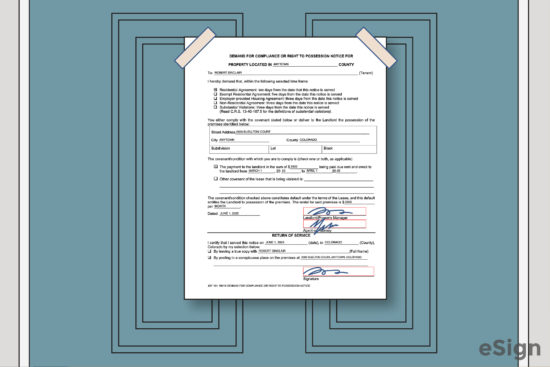Eviction Notices: By Type (3)
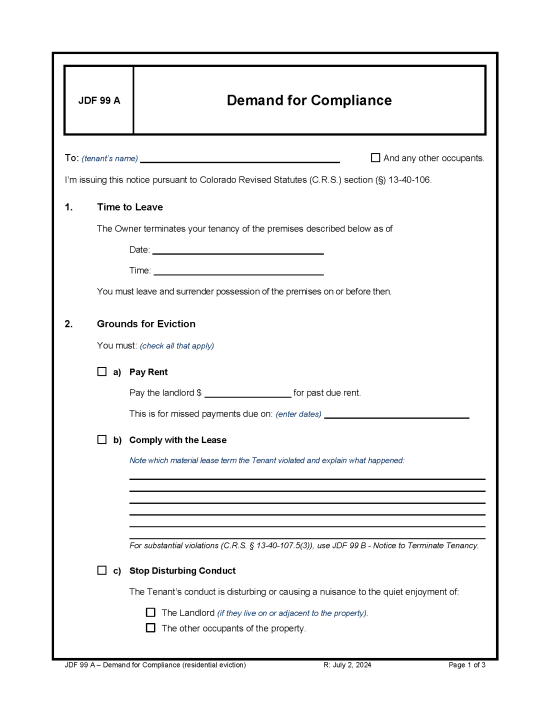
10-Day Notice to Quit | Non-Payment/Non-Compliance – This notice informs tenants that they are in violation of their lease agreement and must remedy the violation or vacate the premises. Download: PDF
|
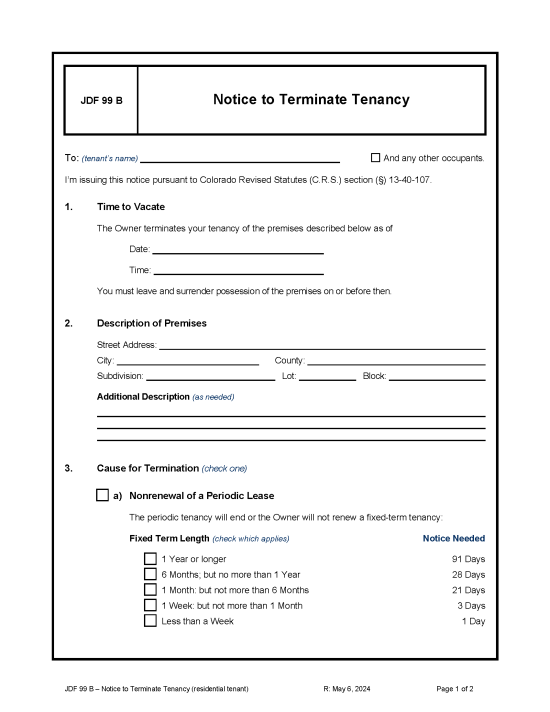 Notice to Quit | Substantial/Second Violation or Nonrenewal – This is used when a tenant has committed a serious or repeat violation or the landlord does not wish to renew a lease. Notice to Quit | Substantial/Second Violation or Nonrenewal – This is used when a tenant has committed a serious or repeat violation or the landlord does not wish to renew a lease.
Download: PDF |
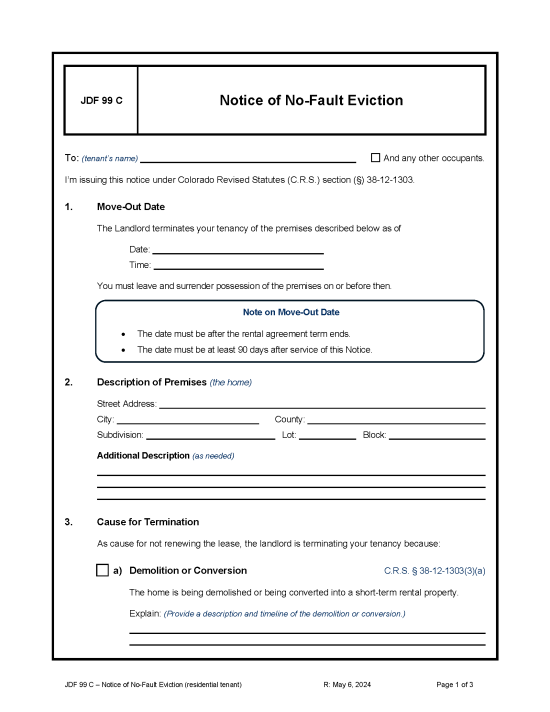 90-Day Notice to Quit | No-Fault Eviction – Used when the landlord wants to terminate a tenancy for a reason beyond the tenant’s fault. 90-Day Notice to Quit | No-Fault Eviction – Used when the landlord wants to terminate a tenancy for a reason beyond the tenant’s fault.
Download: PDF |
Notice Requirements
- Grace Period for Rent – Not mentioned in state statutes.
- Non-Payment of Rent – 10 days.[1]
- Lease Non-Compliance – 10 days.[2]
- Periodic Tenancy Termination[3]:
- Tenancy one year or longer – 91 days.
- Tenancy six months to one year – 28 Days
- Tenancy one to six months – 21 Days
- Tenancy one week to one month – 3 Days
- Tenancy less than one Week – 1 Day
- Substantial Violation – 3 days.[4]
- No-Fault Eviction – 90 days.[5]
How to Evict a Tenant in Colorado
Step 1 – Notify the Tenant
Before a tenant can be evicted from their rented property, their landlord must notify them of their breach and, if applicable, allow them to remedy the issue. The landlord must deliver the appropriate notice to the tenant in person or post it on the front door of the rental property.
Step 2 – Commence Action
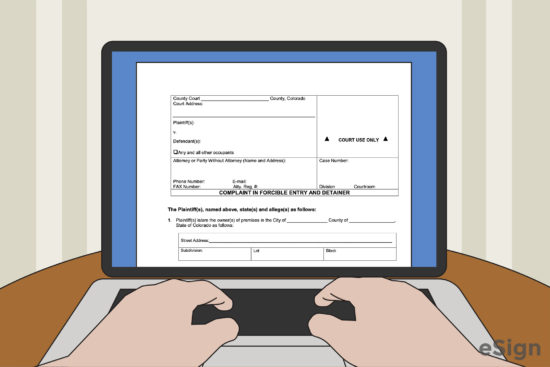
If the tenant fails to comply with the notice, a forcible entry and detainer action (eviction) may be filed by the landlord. The landlord will need to download the following forms, completing only the Complaint and Summons:
- Eviction Complaint (JDF 101)
- Eviction Summons (JDF 102)
- Eviction Answer (JDF 103) (for tenant – leave blank)
- Request for Documents (JDF 108) (for tenant – leave blank)
- Motion to Waive Fees (JDF 205) (for tenant – leave blank)
- Order re Court Fees (JDF 206) (for tenant – leave blank)
Step 3 – File Documents
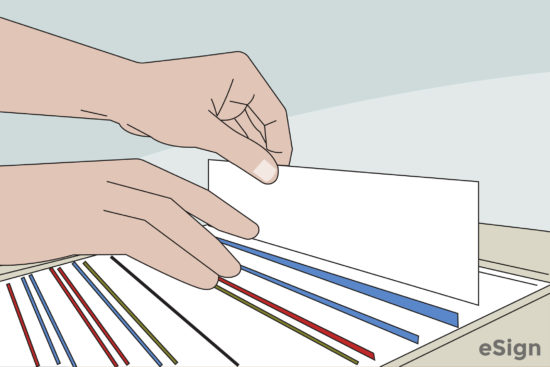
The landlord should make copies of the documents mentioned above as well as the lease and the eviction notice they initially delivered to the tenant. All forms must be filed with the district/county court where the property is located. The clerk will set a date and time for the hearing.
Step 4 – Serve the Tenant

At least seven days before the court date, the landlord must have a process server deliver all documents to the tenant. The server must complete an Affidavit of Service (Form JDF 98), which the landlord must file with the court clerk.
The tenant must complete and file the Eviction Answer (JDF 103) with the court clerk before the date mentioned on the first page of the Summons.
Step 5 – Hearing
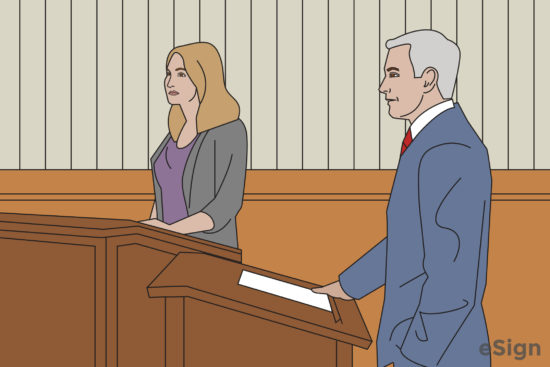
There are a few possible outcomes that could occur at the first hearing.
- Settlement – The parties agree to a stipulation, and the tenant may have to vacate the property, pay money owed and court costs, or remain on the property but agree to specific conditions.
- Parties must submit a Stipulated Agreement (Form JDF 106 A) and an Order re: Stipulated Agreement (Form JDF 106 B).
- Judge’s Decision – If the parties can’t settle the matter themselves, the judge will make a decision based on any evidence or witnesses presented by the parties.
- Trial – The tenant completes the Eviction Answer (Form JDF 103) on or before the first hearing date to defend the landlord’s complaint and files a counterclaim.
- Default Judgment/Dismissal – If only one of the parties appears before the court, the judge may order a default judgment (if tenant was absent) or dismiss the case (if landlord was absent).
Step 6 – Judgment

If the landlord prevails, the court may award the landlord possession and monetary judgment. The landlord must file a Motion for Entry of Judgment (Form JDF 107 A), and the judge will complete a Judgment Order (Form JDF 107 B).
Step 7 – Writ of Restitution (If Applicable)
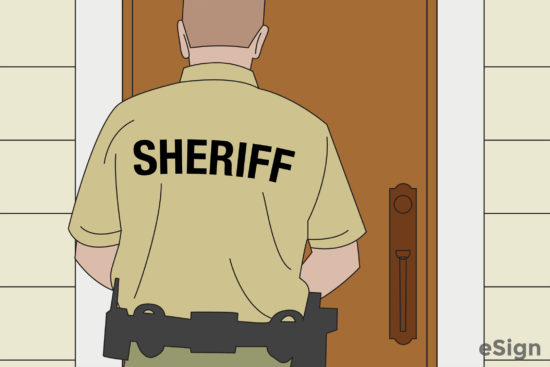
Should the tenant refuse to vacate the premises within 48 hours of the judgment date, a Writ of Restitution (Form JDF 109) can be filed with the court. The landlord will have to provide the county sheriff with the Writ of Restitution signed by the judge and pay the fee. The sheriff will then be able to physically remove the tenant, if necessary.
Court Forms + Resources
Forms
- Affidavit of Service (Form JDF 98)
- Signed by: Process Server
- Eviction Answer (JDF 103)
- Signed by: Tenant
- Eviction Complaint (JDF 101)
- Signed by: Landlord
- Eviction Summons (JDF 102)
- Signed by: Deputy Clerk or Landlord’s Attorney
- Judgment Order (Form JDF 107 B)
- Signed by: Judge (or Magistrate) and Clerk
- Motion for Entry of Judgment (Form JDF 107 A)
- Signed by: Landlord
- Motion to Waive Fees (JDF 205)
- Signed by: Tenant
- Order re: Court Fees (JDF 206)
- Signed by: Judge (or Magistrate)
- Order re: Stipulated Agreement (Form JDF 106 B)
- Signed by: Judge (or Magistrate) and Clerk
- Request for Documents (JDF 108)
- Signed by: Tenant
- Stipulated Agreement (Form JDF 106 A)
- Signed by: Landlord and Tenant
- Writ of Restitution (Form JDF 109)
- Signed by: Judge (or Magistrate)
Resources
